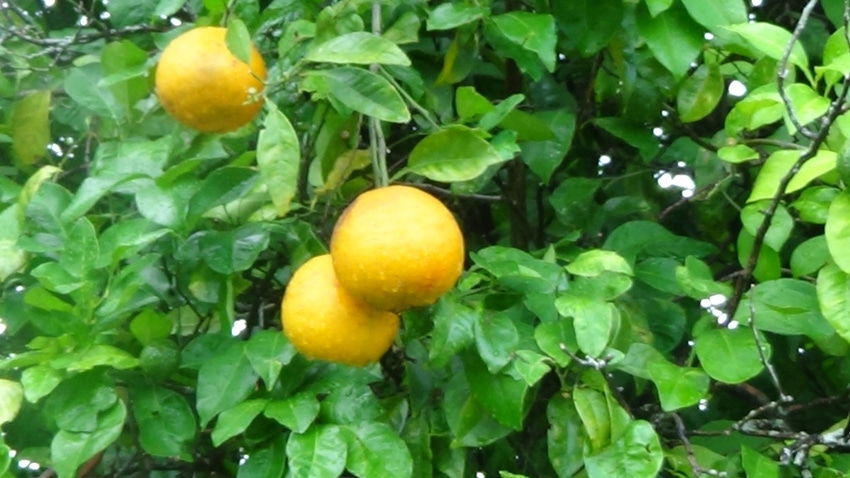
The war against Citrus Greening disease goes back to 2005 when Florida's lucrative citrus industry was assaulted by Asian Citrus psyllids, which led to the devastation of much of the state's citrus crop and created concern among U.S. citrus growers nationwide at the prospect of facing the threat.
That war against the psylid and the plant-killing bacteria it carries (huanglongbing, better known as HLB) has spread over the last 10-plus years as the pests migrated from the Southeast coast westward to Texas, finally reaching California’s and the rich citrus growing areas.
While advances in research on both the citrus disease and the psyllids that vector it from state to state and country to country have intensified through the years, new technology and defense systems have been and are continuing to be developed in agriculture's ongoing battle against citrus greening.
A new tool being tested may add to the arsenal of weapons to manage and control the spread of huanglongbing by targeting the reproductive activity of the insect that spreads the disease.
HLB is one of the most destructive diseases of citrus worldwide. Originally thought to be caused by a virus, it is now known to be caused by unculturable phloem-limited bacteria. Three forms of greening have been described so far. The African form produces symptoms only under cool conditions and is transmitted by the African citrus psyllid Trioza erytreae; the Asian form prefers warmer conditions and is transmitted by the Asian citrus psyllid Diaphorina citri. Recently, a third American form transmitted by the Asian citrus psyllid was discovered in Brazil. This American form of the disease apparently originated in China.
THE DANGERS OF THE DISEASE
In North America, the psyllid vector, Diaphorina citri, of HLB is found in Florida, Louisiana, Georgia, South Carolina, Texas and Hawaii, and recently arrived in Southern California from Mexico.
The immediate response to the invasion of the Asian Citrus psyllid was to rely on insecticides in orchards and citrus groves for management and control. But industry officials quickly noted such treatments rapidly escalate input costs, and before long become economically impossible to continue.
For the latest on southwest agriculture, please check out Southwest Farm Press Daily and receive the latest news right to your inbox.
In recent years, researchers have been offering possible alternatives.
Citrus is the world’s most widely cultivated fruit crop, so developing a good defense to thwart the rapid spread of the disease is paramount if agriculture wishes to save the wavering citrus industry around the globe. Already, new methods to combat the disease have been suggested or introduced. In Texas, where HLB has reached the fertile citrus orchards of the Lower Rio Grande Valley, Texas A&M researchers have been working with a number of new technologies, including genetically modifying orange trees to develop resistance to the bacteria by introducing a gene from spinach. The gene produces a protein that fights off bacterial infections.
Antimicrobial treatments, the use of high-heat treatments to kill the bacteria, and the establishment of model groves to determine whether particular nutrient management practices can prove effective in staving off the effects of HLB have also been tried, and research continues on their effectiveness.
Scientists from Texas and California have also introduced natural predators to affected or high risk orchards. One such predator that has proven effective is the Tamarixia radiata, a tiny parasitic wasp imported from Pakistan. Trials and additional research are ongoing, but some success has been realized through the use of these predators.
NEW TECHNOLOGY
The latest technology being tested may also increase the arsenal of weapons available to help manage and control the spread of the psyllids and the disease they carry.
USDA's Agricultural Research Service (USDA-ARS) is planning field trials this summer to test the effectiveness of a new citrus psyllid acoustic trap developed in part by entomologist Richard Mankin at ARS’s Insect Behavior and Biocontrol Research Unit in Gainesville, Florida.
The acoustic trap is designed to disrupt mating of Asian citrus psyllids. Instead of using pheromones as an attractant as most insect traps do, scientists will be testing sounds that mimic the wing-buzzing vibrations male and female psyllids use to locate one another in citrus trees.
"Concern over the long-term impact and cost of using insecticides to control psyllids in Florida and other states and U.S. territories where citrus greening has been detected prompted an intensive search for alternatives," says Mankin.
His idea for the acoustic trap came from his studies of how insect pests use smell, sight, or hearing to locate food and mates. In essence, the new acoustic device sends out an audible beacon that helps attract psyllids to what they assume is a form of mating – or location – call.
Together with University of Florida graduate students, Mankin decoded the psyllid’s signaling patterns and recreated them with electronics including a buzzer and a microphone. Connected to an Arduino microcontroller, he discovered in laboratory tests that the sound emitted from the devices lures the male psyllid into a nearby sticky trap.
Mankin and his team are now refining the trap for outdoor testing in the months ahead.
About the Author(s)
You May Also Like




